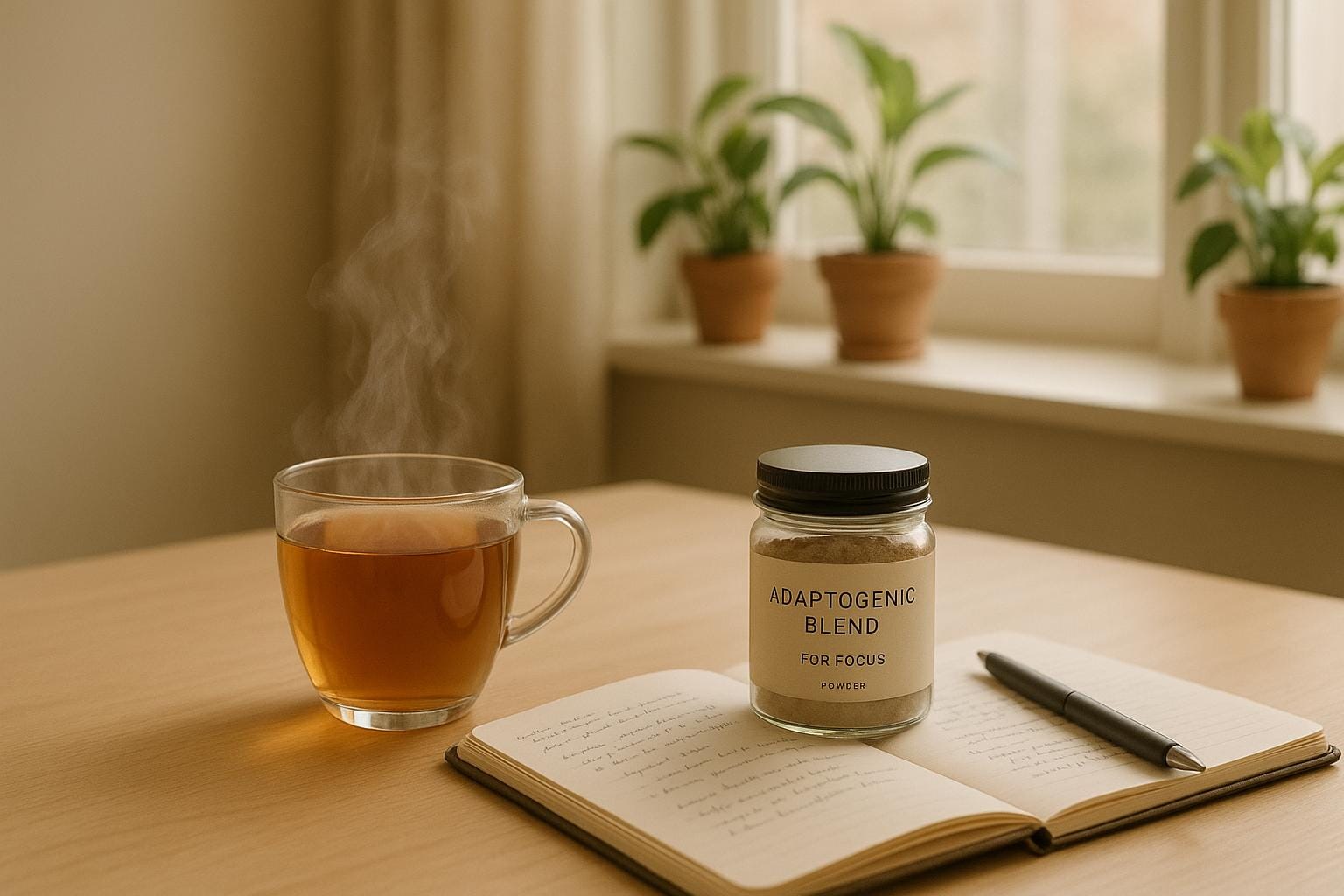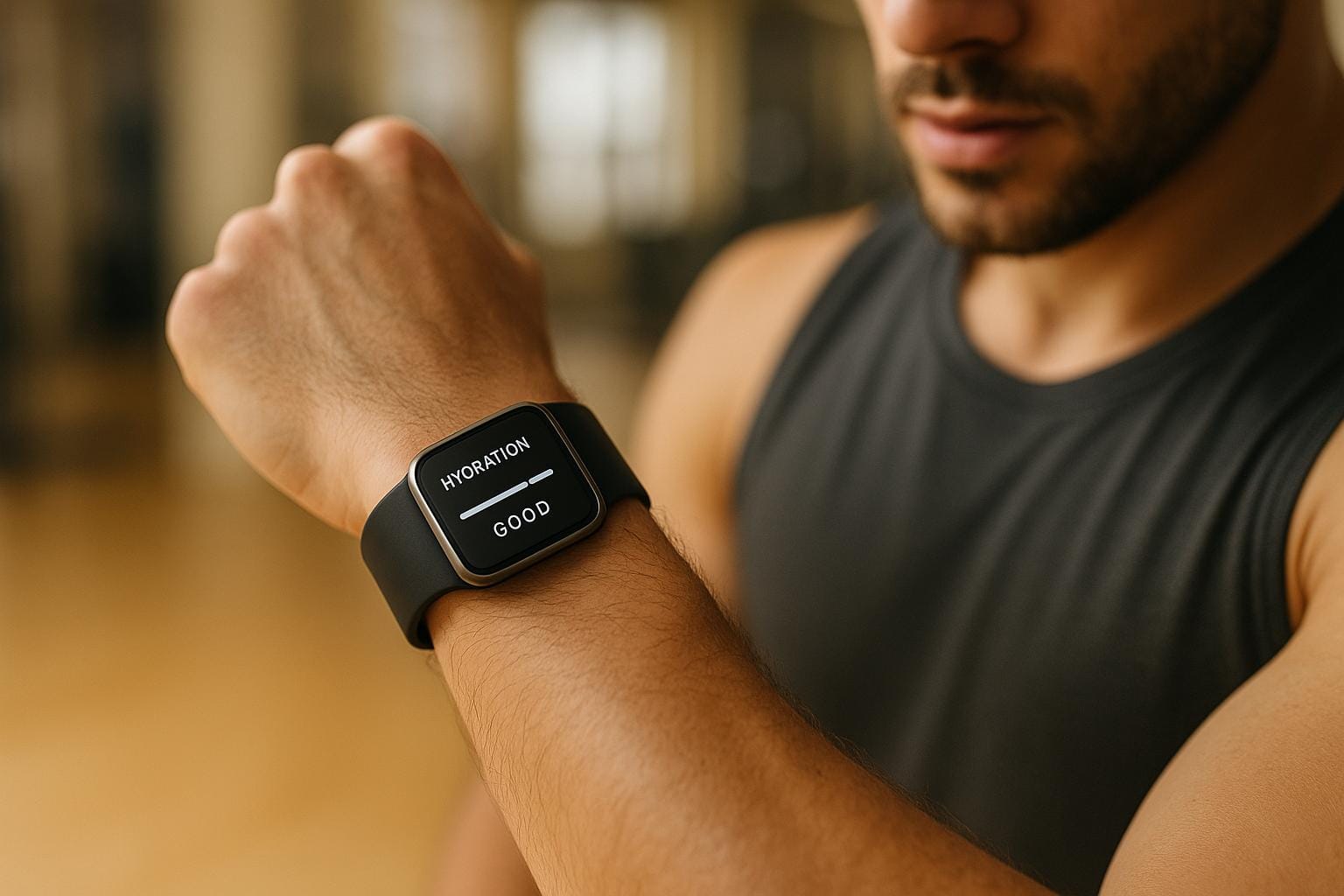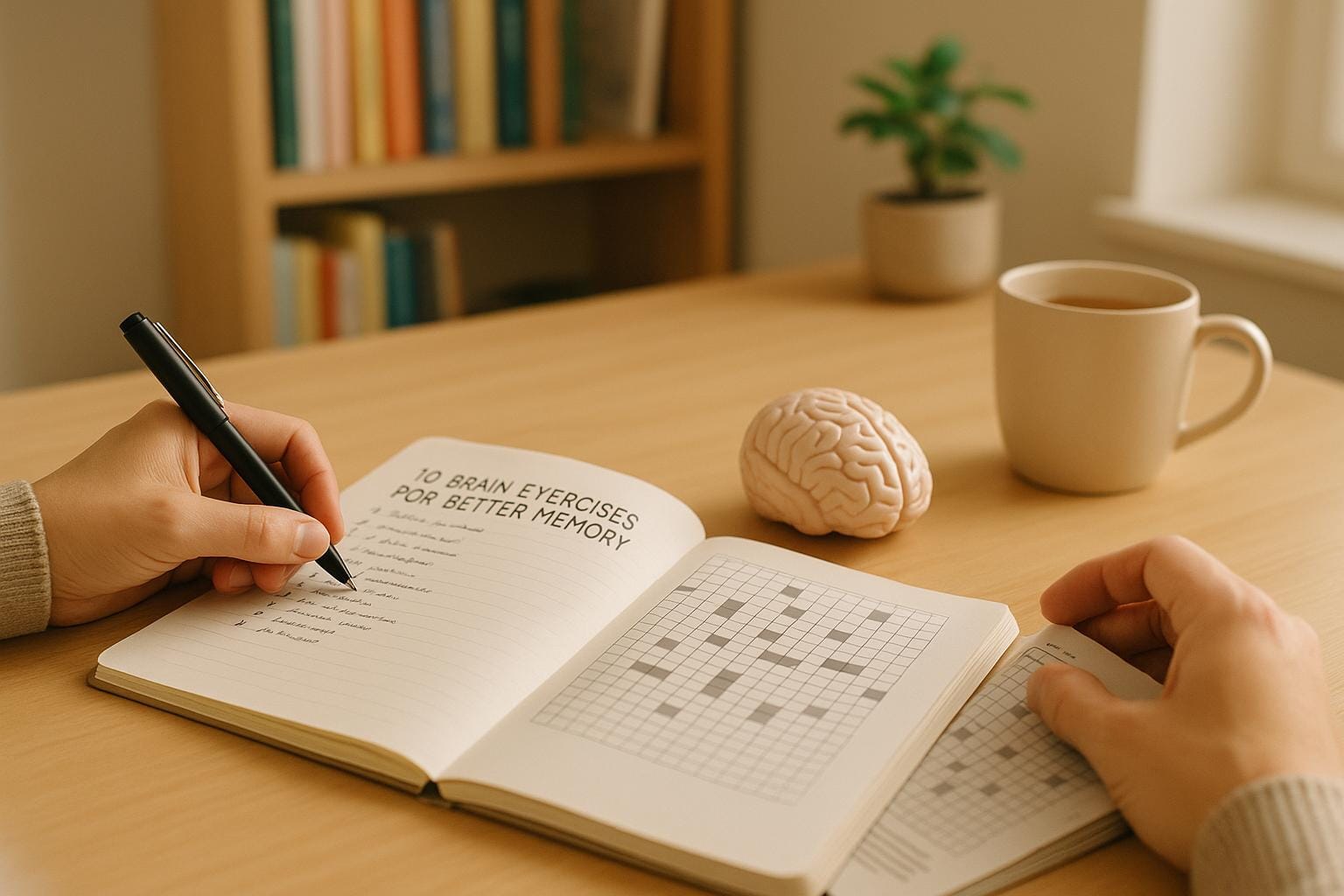Stress recovery is your body's process of returning to balance after experiencing stress. Acute stress usually resolves within hours or a few days, while chronic stress or burnout can take months to over a year. Recovery times vary based on factors like stress intensity, duration, health, sleep, and support systems.
Key insights:
- Acute stress: 2–3 days for minor stress; trauma-related stress may last weeks.
- Chronic stress: Recovery can take 3–12 months or longer, depending on severity and environment.
- Burnout: Mild cases improve in 3–6 months; severe cases may take 12–18 months.
Monitoring tools like heart rate variability (HRV), sleep quality, and self-assessments can help track progress. Effective recovery strategies include rest, mindfulness, regular exercise, and seeking support when needed. Recovery isn’t instant - it requires consistent effort and addressing root causes.
After Stress Has Passed: Let-Down & Stress Recovery
Typical Stress Recovery Timeframes
The time it takes to recover from stress depends largely on the type of stress you're dealing with. Acute stress tends to resolve quickly, while chronic stress often demands a longer recovery period. Below, we break down the recovery timelines for both acute and chronic stress and explore how physical and mental recovery may progress differently.
Acute Stress: Short-Term Recovery
Acute stress typically resolves within a few hours to a couple of days, usually between 2–3 days at most. This quick recovery is part of your body’s natural healing process. Once the immediate stressor is removed or addressed, your body begins to return to its normal state.
In contrast, trauma-related stress - such as stress caused by a distressing event - can linger longer. Symptoms of trauma-related stress last at least three days and may persist for up to four weeks. Studies show that around 19% of people exposed to trauma develop Acute Stress Disorder (ASD), with its prevalence peaking at 24% during the first week and rising to as high as 40% in the second week.
The key difference between everyday acute stress and trauma-related stress lies in their intensity and duration.
"It is normal to have strong reactions following a distressing or frightening event, but these should begin to reduce after a few weeks."
Chronic Stress and Burnout: Long-Term Recovery
Recovering from chronic stress is a longer process, often taking around three months, while burnout recovery can range from three months to over a year. For instance, mild burnout in a supportive environment may improve within 3–6 months, but severe burnout - especially in a toxic workplace - might take anywhere from 12 to 18 months or longer.
The scope of the issue is enormous: 45% of workers report feeling "emotionally drained" by their jobs, and 51% feel "used up" by the end of the day. In the UK, nearly 9 in 10 adults experienced high or extreme stress last year, and almost half (49%) say their employers lack a plan to address chronic stress.
Burnout prevention specialist Tara Kermiet highlights the complexity of recovery:
"Burnout doesn't have a recovery timeline. It has a recovery equation.
You don't heal burnout with a bandaid. You heal it with a blueprint for something better."
This emphasizes that overcoming chronic stress often requires more than just rest - it involves addressing the root causes and making meaningful changes to your environment or lifestyle.
Physical vs. Mental Recovery
Physical symptoms of stress often resolve faster than mental or emotional healing. Even after a stressor is removed, mental recovery can lag behind.
The World Health Organization defines burnout as:
"Burnout is an ongoing state of emotional, physical, and mental exhaustion caused by excessive and prolonged stress."
Recovery from chronic stress depends on many factors, including the duration and causes of stress, your coping mechanisms, emotional resilience, support systems, and overall environment. While physical recovery may show progress sooner, mental recovery often requires long-term adjustments and support.
There’s hope, though - 71% of adults in the UK say that having a supportive network of friends or family outside of work significantly helps in managing stress and preventing burnout.
This article is for informational purposes only and is not intended as medical advice. Please consult a healthcare professional before starting any new fitness or wellness routine.
What Affects Stress Recovery Speed
Several factors influence how quickly you recover from stress. By understanding these, you can pinpoint what might be slowing your progress and explore ways to recover more effectively.
Stress Intensity and Duration
The type and extent of stress you experience play a big role in your recovery. Chronic stress tends to create a constant, low-level strain, while burnout is a more severe and long-lasting condition.
Research shows that stress can significantly delay physical healing. For instance, one study found that female caregivers under stress healed 24% slower from a small biopsy wound. Similarly, mice subjected to acute stress healed 27% slower than their non-stressed counterparts.
Both the intensity and the length of time you're exposed to stress matter. Chronic stress continuously taxes your body, requiring recovery that addresses both short-term and long-term impacts.
Health, Resilience, and Lifestyle
Your overall health, mental resilience, and daily habits - like diet, exercise, and sleep - directly affect your recovery speed.
Sleep quality is particularly critical. Adults generally need at least seven hours of sleep per night, yet nearly one-third of Americans fall short of this target. Lack of sleep not only increases your risk for conditions like diabetes, heart disease, and stroke but also slows your body’s ability to recover from stress.
"Sleep is the greatest legal performance-enhancing drug that most people are probably neglecting." - Dr. Matthew Walker
Exercise is another powerful tool for managing stress. Regular physical activity not only improves your mood but also offers long-term health benefits like better weight management, stronger bones, and a reduced risk of disease. For example, older adults who engaged in a four-week exercise program healed wounds 25% faster than those who were less active.
Mental resilience - your ability to cope with and adapt to stress - varies from person to person. Emotional strength, effective coping strategies, and a positive outlook can all help speed up recovery.
Focusing on these personal factors creates a strong foundation for external support to enhance your recovery even further.
Support Systems and Stress Removal
Social support and eliminating stressors from your environment can dramatically improve how quickly you recover. Having a strong network of friends or family has been shown to have measurable health benefits. For example, Vietnam veterans with high social support were 180% less likely to develop PTSD compared to those with weaker support systems.
Seeking professional help can also make a significant difference. About 75% of individuals who seek treatment for substance use disorders successfully recover, although relapse rates range between 40% and 60%.
Making environmental changes - like removing stress triggers and adopting stress management techniques - can further improve recovery. High-quality social networks can buffer the effects of both mental and physical health challenges.
By combining healthy habits, emotional resilience, and external support, you can accelerate the recovery process and prepare for more targeted strategies in the next steps.
This article is for informational purposes only and is not intended as medical advice. Please consult a healthcare professional before starting any new fitness or wellness routine.
How to Track Your Stress Recovery
Understanding how to monitor your stress recovery is key to refining your approach and ensuring your efforts are effective. By keeping track of your progress, you can identify what’s working and make adjustments to improve your overall recovery.
Heart Rate and Heart Rate Variability (HRV)
Heart rate variability (HRV) is a reliable way to measure how well your body is recovering from stress. HRV reflects the variation in time between heartbeats, offering insight into the balance between your sympathetic ("fight-or-flight") and parasympathetic ("rest and digest") nervous systems.
- Lower HRV often means your body is stuck in a heightened "fight-or-flight" mode.
- Higher HRV indicates your body is in a more relaxed state, showing better stress adaptation.
HRV values vary by age. For example, teens and young adults (ages 18–24) typically fall between 55 and 100 milliseconds, while those over 60 average between 25 and 45 milliseconds. To get accurate readings, measure your HRV first thing in the morning using an ECG or chest strap monitor.
As Vincent Luppino explains:
"Heart rate variability measures the balance between your fight-or-flight and rest-and-digest responses, so tracking your individual trend helps guide daily decisions."
Athletes frequently use HRV to assess how daily habits, stressors, and training impact their recovery. It’s also helpful for spotting signs of overtraining, potential illness, and evaluating how changes in their routine affect their body.
While HRV provides objective data, it’s equally important to pay attention to your subjective experiences.
Self-Assessment and Symptom Tracking
Your personal observations can reveal aspects of stress recovery that numbers alone might miss. Keep an eye on symptoms like irritability, fatigue, headaches, insomnia, digestive issues, or low mood.
Tools like the Perceived Stress Scale (PSS) can help you measure your stress levels by assessing your emotions and thoughts over the past month. Another option, the Ardell Wellness Stress Test, evaluates your overall well-being by considering physical, mental, emotional, and social health. It also examines satisfaction in areas like work, relationships, and finances.
Other validated questionnaires can help you track how well you’re coping with stress and whether your support systems and habits, such as exercise and emotional regulation, are effective. Regular self-assessments allow you to spot patterns and pinpoint areas in your life that may need extra attention during your recovery.
Sleep Quality and Night-Time Recovery
Sleep is a cornerstone of recovery, and its quality can both influence and reflect your stress levels. Poor sleep often worsens stress, creating a cycle that’s hard to break. That’s why monitoring your sleep is an essential part of stress recovery.
A simple sleep diary can help you track bedtime, how long it takes to fall asleep, any awakenings, and overall sleep quality. For a more structured approach, the Pittsburgh Sleep Quality Index (PSQI) is a popular tool for measuring sleep quality. A score above 5 suggests poor sleep, with the PSQI boasting 89% sensitivity and 86.5% specificity in distinguishing poor sleepers from good ones.
If daytime sleepiness is a concern, the Epworth Sleepiness Scale can help. A score over 10 indicates excessive sleepiness, which could mean your nighttime recovery isn’t adequate.
For objective data, actigraphy devices monitor your sleep-wake patterns by tracking movement over several days. While pricier than questionnaires, actigraphy provides detailed insights into your sleep cycles, revealing patterns you might not notice otherwise.
Sleep issues are particularly common among older adults, with about 50% reporting difficulties. However, the connection between stress and sleep affects all age groups. Stress can either disrupt or improve sleep, depending on its intensity and duration.
By combining these tracking methods - HRV, self-assessment, and sleep monitoring - you can build a complete picture of your stress recovery. This allows you to make informed adjustments to your recovery plan and stay on track toward better health.
This article is for informational purposes only and is not intended as medical advice. Please consult a healthcare professional before starting any new fitness or wellness routine.
Ways to Speed Up Stress Recovery
Once you've identified how stress affects you, it's time to focus on methods that can help you recover more quickly.
Mindfulness and Relaxation Practices
Relaxation techniques are a powerful way to counteract stress. They work by calming your breathing, slowing your heart rate, and reducing blood pressure - all of which help restore balance to your body and mind. This is especially important when you consider that 66% of American workers report lying awake at night due to stress's physical or emotional toll.
One of the easiest and most effective ways to relax is deep breathing. By sitting comfortably and practicing slow, controlled breaths, you can engage your parasympathetic system, which helps your body relax.
For a more structured approach, try progressive muscle relaxation, where you tense and release muscle groups from your feet to your face, or body scan meditation, which involves focusing on each part of your body in turn, simply noticing sensations without judgment.
Another great option is mindfulness meditation, which has been shown to reduce stress, anxiety, and even depression. This practice helps you become more aware of your thoughts, giving you the ability to pause and respond thoughtfully instead of reacting impulsively to stressors.
Visualization exercises are also highly effective. By imagining a calming scene - whether it's a serene beach, a lush forest, or a cozy room - you can activate your relaxation response. Add sensory details to make the mental image more vivid and soothing.
If you prefer a hands-on approach, consider self-massage to relieve muscle tension, especially in areas like your neck and head. For those who enjoy movement, practices like yoga and tai chi combine breathing exercises with gentle, flowing postures to ease stress while improving flexibility and balance. Similarly, engaging in rhythmic movement - such as walking, swimming, or dancing - can be incredibly restorative when done mindfully.
Julie Corliss, Executive Editor of Harvard Heart Letter, puts it best:
"The relaxation response is the opposite of the stress response. It's a state of profound rest that can be elicited in many ways. With regular practice, you create a well of calm to dip into as the need arises."
Consistency is key. Even a few minutes of these practices can make a difference, but the more regularly you incorporate them into your routine, the greater the benefits.
Daily Recovery Routines
Daily routines can bring much-needed structure, replacing the unpredictability of stress with a sense of stability. A consistent schedule helps create a foundation for recovery and promotes long-term well-being.
Start by identifying activities that support your mental and physical health - like exercise, meditation, hobbies, and work or study - and plan them around your energy levels throughout the day. A balanced routine should include:
- Sleep: Aim for 7–9 hours of quality rest each night.
- Exercise: Regular physical activity boosts mood and reduces stress.
- Nutrition: Eat balanced meals to fuel your body and mind.
- Social connections: Spend time with friends and loved ones.
- Personal reflection: Set aside time for journaling or mindfulness.
Journaling is particularly helpful for managing stress. Writing down your thoughts and feelings provides a safe, judgment-free outlet and can help reduce anxiety. Choose a journaling style that works for you - whether it's a daily diary, gratitude journal, or progress tracker - and stick to a consistent schedule. Prompts like "What went well today?" or "What am I grateful for?" can guide your reflections. Tracking your progress and celebrating small wins can keep you motivated.
If self-guided methods don't seem to be enough, don't hesitate to seek professional assistance.
Professional Support and Resources
Sometimes, stress can feel overwhelming, and that's when professional help becomes essential. Signs that you may need support include persistent symptoms lasting two weeks or more, trouble sleeping, changes in appetite, difficulty concentrating, loss of interest in usual activities, or feelings of irritability and hopelessness.
Your primary care provider is a good starting point. They can perform an initial mental health screening and refer you to a psychologist or counselor who can tailor coping strategies to your needs. Many workplaces also offer Employee Assistance Programs (EAPs), which provide confidential services for mental health, grief, trauma, and more. These programs often include free counseling sessions, so check with your HR department to learn about your options.
Support groups and peer networks can also play a valuable role in recovery. They provide not only practical advice but also emotional support, helping you feel less alone. According to the Substance Abuse and Mental Health Services Administration (SAMHSA), recovery is "a process of change through which individuals improve their health and wellness, live self-directed lives, and strive to reach their full potential".
For more insights on mindfulness, sleep recovery, and other wellness practices, check out resources like Fitup, which offers evidence-based content to complement your recovery journey.
This article is for informational purposes only and is not intended as medical advice. Please consult a healthcare professional before starting any new fitness or wellness routine.
Conclusion: Key Points for Stress Recovery
Stress recovery isn't a one-size-fits-all process. While acute stress typically subsides within 24–48 hours, chronic stress often demands a longer and more deliberate recovery period.
Recovery speed depends on several factors, including your age, overall health, daily habits, and the strength of your support network. With approximately 10% of young people experiencing anxiety and stress-related disorders, early intervention and tailored recovery strategies are crucial.
As highlighted earlier, your recovery journey is as unique as the stressors you face. Tracking progress through tools like heart rate variability, sleep quality, or symptoms can help you refine your approach and deepen your self-awareness.
Taking proactive steps can make a noticeable difference. Prioritize 7–9 hours of quality sleep to restore emotional balance and improve cognitive function. Incorporate a 20–30 minute walk into your routine to reduce cortisol levels and release endorphins, which support recovery. Simple breathing exercises, such as inhaling for 4 seconds, holding for 2, and exhaling for 6, can activate relaxation within 10–15 minutes.
If your symptoms persist or feel unmanageable, don't hesitate to seek professional help. With many individuals experiencing high levels of work-related stress, professional support can be a vital part of a well-rounded recovery plan.
Ultimately, recovery is about recognizing your stress patterns, using effective strategies, and reaching out for help when necessary. By actively engaging in your recovery, you can regain balance more effectively and build resilience to handle future challenges.
This article is for informational purposes only and is not intended as medical advice. Please consult a healthcare professional before starting any new fitness or wellness routine.
FAQs
What are the best ways to recover quickly from chronic stress and burnout?
Recovering from chronic stress and burnout takes effort and patience, but there are ways to make the process smoother. Start with stress management techniques like deep breathing, mindfulness, or meditation. These methods can help calm your mind and ease immediate tension.
Equally important is focusing on healthy lifestyle habits. Prioritize quality sleep, stay active with regular exercise, and nourish your body with a balanced diet. These habits not only replenish your energy but also boost your overall well-being. Additionally, learn to set boundaries - whether at work or in your personal life - to protect your time and energy. Don’t hesitate to lean on trusted friends, family, or even a professional for support when needed.
The key to recovery is consistency. By making these practices a regular part of your routine, you can support both your mental and physical health while reducing the risk of future burnout.
How can heart rate variability (HRV) help track my stress recovery?
Heart rate variability (HRV) is a powerful way to gauge how well your body is bouncing back from stress. It looks at the tiny variations in time between your heartbeats, giving you a snapshot of how your autonomic nervous system is balancing itself. A higher HRV often signals better recovery and a greater ability to handle stress, while a lower HRV could mean your body is still in recovery mode or feeling the strain.
Tracking your HRV daily can reveal how your body is coping with stress and whether it might need extra rest. With this knowledge, you can make smarter choices - like dialing back your activity, focusing on recovery, or adding stress-relief practices like mindfulness or relaxation exercises to your day.
How does sleep quality affect stress recovery, and what can I do to improve it?
Sleep plays a key role in helping the body and mind recover from stress, allowing you to regain balance after tough experiences. When sleep is poor, it can slow down both emotional and physical recovery. On the flip side, good-quality sleep can boost your ability to bounce back and heal more quickly.
Here are some tips to enhance your sleep quality:
- Stick to a regular sleep schedule: Aim to go to bed and wake up at the same time every day, including weekends.
- Establish a relaxing bedtime routine: Dim the lights, stay off screens, and try calming activities like reading or meditating.
- Set up a sleep-friendly environment: Keep your bedroom dark, quiet, and at a comfortable temperature.
- Avoid evening stimulants: Skip caffeine and alcohol later in the day, as they can interfere with your sleep patterns.
Adding stress-relief practices like mindfulness or yoga to your routine can also improve your sleep and help you recover from stress more effectively.












